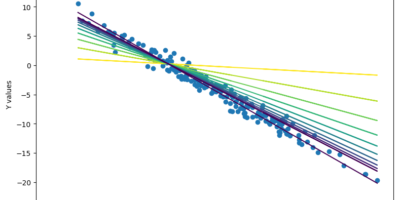A few weeks ago, in the late evening of Saturday September 6th , the residents of Managua—the capital city of Nicaragua—awoke to the sounds of an explosion. The next day, a 12 metre wide crater was discovered in a desolate and lightly-forested area of the city. Government scientists reported that the explosion and resulting crater were the result of a small meteorite impact. They cited seismic readings, the conical shape of the crater, and other on-site evidence as proof for their conclusions. Given the size of the crater, the impact would have been a one kiloton explosion, equal to the energy released by detonating one ton of TNT.
Many scientists and organizations were quick to criticize the meteorite theory. Among them is Bill Cooke, head of NASA’s Meteoroid Environment Office, who says that “[he is] very sceptical” because there have been no reports of the large fireball which would have resulted from the impact, despite allegedly occurring near a metropolis of around 1.5 million people. Others have noted that there have also been no recovered meteorite fragments, nor reports of a bright streak through the sky—a brighter version of the streak which gives meteors the nick-name “shooting stars” when they burn up in the upper atmosphere—before impact. Furthermore, an additional claim by the Nicaraguan scientist that the meteorite is related to the close passage of asteroid 2014 RC to Earth has been dismissed as ridiculous since the Nicaraguan event occurred 13 hours before 2014 RC made its closest pass.
It would seem that the Nicaraguan government’s claim that the mysterious crater as the result of a meteorite impact is dubious, especially in light of the crater’s close proximity to Managua’s international airport. Meteors and other space debris, such as interplanetary dust, actually enters Earth’s atmosphere on a surprisingly regular basis. For instance, it has been estimated that there are between five and ten meteorite strikes on Earth annually (that is, meteors which make it to the surface intact). In total, Earth vacuums up about 40 000 tonnes of space debris every year, even as it loses 96 000 tonnes of hydrogen, and 1600 tonnes of helium (which, being rare on Earth, is actually a somewhat pressing issue).
The most memorable meteorite strike of recent history is undoubtedly the Chelyabinsk meteorite, which entered the atmosphere and exploded over Russia in February 2013. This massive asteroid—20 metres in diameter—expended 1.8 petajoules of kinetic energy in our atmosphere (equivalent to 500 kilotons of TNT), much larger than many nuclear weapons in our arsenal including both the Hiroshima and Nagasaki bombs. The shock wave was strong enough to do significant damage on the ground 30 km below, primarily breaking windows. The explosion was also picked up by various infrasound stations of the Comprehensive Nuclear-Test-Ban Treaty Organization (CTBTO), which are intended to detect the shock waves from atmospheric atomic test bombs banned under the terms of the treaty. And while the Chelyabinsk meteorite may be a once-in-a-lifetime event at the very least, CTBTO reports that it recorded 26 major meteorite impacts between 2000 and 2013.
While a major impact, like the type which is hypothesized to have killed the dinosaurs, or even another Chelyabinsk-style event may be unlikely tomorrow, in the larger scheme of thousands or hundreds of thousands of years it is a scenario that humanity will eventually have to face. Already fascinating and significant research is being done on how we could identify and mitigate these threats. For instance, the Sentinel Space Telescope, currently being developed and built for the non-profit planetary defence B612 Foundation, could detect up to 90% of all near-Earth asteroids larger than 140 metres in diameter. And while the ESA’s Rosetta comet-orbiting probe may not be specifically designed to study comet-rerouting strategies, the information it’s sending back could undoubtedly be useful in that task.
So even if a meteorite didn’t land in Nicaragua creating a massive crater without anyone seeing it hit, keep looking up at the sky. There’s a lot of stuff to see, and some of it happens more often than you would think.




Leave a Reply